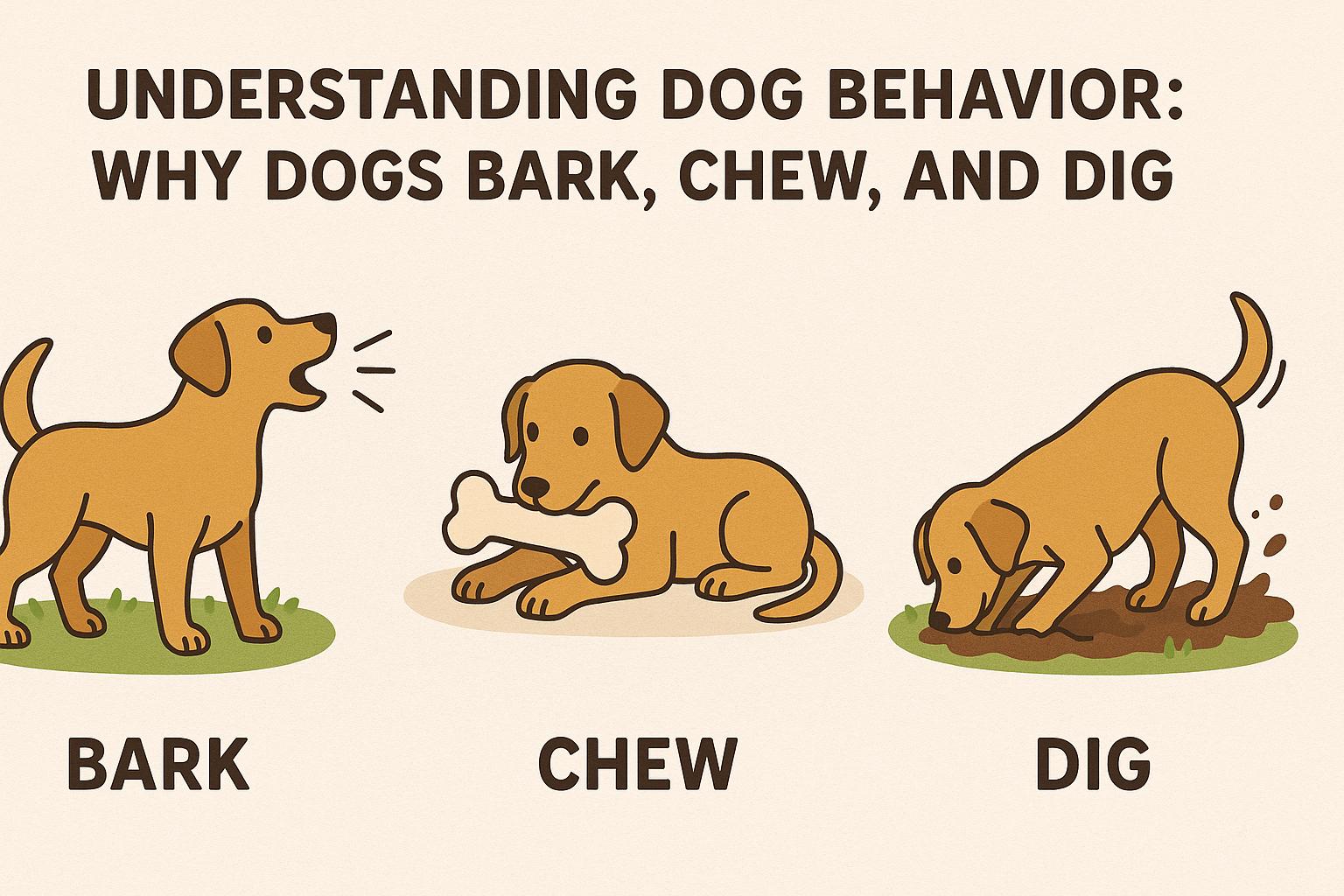
Dogs possess a myriad of behaviors that can frequently captivate and occasionally mystify even the most dedicated pet owners. As social animals that have evolved alongside humans for millennia, dogs have developed distinct behavioral patterns that serve various purposes. Here, we delve deeper into the common behaviors of barking, chewing, and digging, along with strategies for managing them.
Barking is one of the most noticeable forms of vocal communication in dogs, serving numerous functions. These vocalizations are as varied as the contexts in which they occur, reflecting a dog’s complex communication methods.
Alert: Alert barking is deeply embedded in a dog’s instinct. Historically, many dog breeds were developed for the purpose of guarding premises and alerting humans to potential intruders or unusual occurrences. This behavior was particularly beneficial in times when human-dog partnerships kept communities safe.
Attention seeking: Just as humans might call out to signal a desire for connection, dogs often use barking as a way to communicate their need for interaction. Whether they want to initiate a play session, request more food, or seek companionship, dogs understand that a bark can quickly grab their human’s attention.
Fear or anxiety: Barking in response to fear or anxiety can arise from various triggers, ranging from unfamiliar visitors to loud noises such as thunderstorms or fireworks. This type of barking serves as an outward expression of the dog’s internal state of distress.
Boredom: When left alone without stimulation, dogs may resort to barking to break the monotony of their day. This behavior may also be exacerbated in dogs with high energy levels or those who lack sufficient physical exercise or mental engagement.
Effectively managing barking begins with recognizing its cause. Owners can employ several strategies, such as positive reinforcement training, where dogs are rewarded for remaining quiet, thereby associating silence with positive outcomes. If the barking stems from anxiety or fear, desensitization and counter-conditioning can reduce sensitivity to triggers. In cases where barking persists, consulting with a professional trainer or animal behaviorist can provide tailored techniques to address the issue.
Chewing serves as a fundamentally important activity for dogs, extending from their early upbringing through to adulthood. While it poses certain challenges, understanding its roots helps in effectively redirecting this instinct.
Exploration: Much of a dog’s understanding of its environment is developed through chewing. By gnawing on different objects, dogs glean sensory information, much like humans do by touching or examining things closely.
Stress relief: Some dogs resort to chewing as a mechanism to soothe themselves during times of stress or loneliness. The repetitive motion of chewing can be calming, serving as a distraction from anxiety-inducing stimuli.
Dental health: Beyond entertainment, chewing plays a crucial role in maintaining oral hygiene. The mechanical action of chewing helps to scrape away plaque, contributing to healthier teeth and gums.
To deter dogs from damaging household items, offering a variety of suitable chew toys is effective. These toys not only satisfy the natural urge to chew but can also be selected based on the dog’s size and chewing strength to ensure safety. To reinforce desirable behavior, owners can use positive feedback whenever a dog chooses their toys over furniture.
Digging, another instinctual behavior, can trace its origins back to canine ancestors. Although seemingly unpredictable, several motivations drive this activity, which reflect both historical functions and modern challenges.
Instinctual behavior: Dogs have historically engaged in digging to fulfill various survival needs. Initially, dogs excavated burrows to chase after prey or to create cool resting places in hot climates, a practice seen in the wild.
Escape attempts: Dogs seeking to escape from a confined space, either due to curiosity or the pull of interesting stimuli outside their immediate environment, might dig under fences or barriers.
Attention seeking: Similar to barking, digging might be employed as a tactic for regaining an owner’s attention, especially if the dog has learned that such behavior prompts a reaction or engagement.
Boredom: A lack of physical or mental outlets can lead to digging as a form of self-stimulation. Bored dogs may dig as a way to occupy their time, offering either bodily exertion or a change of scenery.
In addressing a dog’s digging behavior, comprehension of the dog’s motivations is the first step. Regular exercise and engaging activities not only mitigate boredom but also help in managing energy levels, reducing the tendency to dig out of restlessness. Creating designated digging zones, such as sandboxes, allows the dog to indulge its instincts in a controlled manner, preserving the rest of the yard from destructive behavior.
A comprehensive understanding of dog behaviors like barking, chewing, and digging enhances the interaction and relationship between dogs and their owners. Recognition and assessment of the underlying causes enable informed strategies to uphold desired harmonious living conditions. For particularly complex cases, seeking the insight of animal behaviorists or trainers can provide tailored solutions, supporting both canine well-being and owner peace of mind. By approaching these behaviors with knowledge and patience, owners can cultivate an environment where both they and their pets thrive.